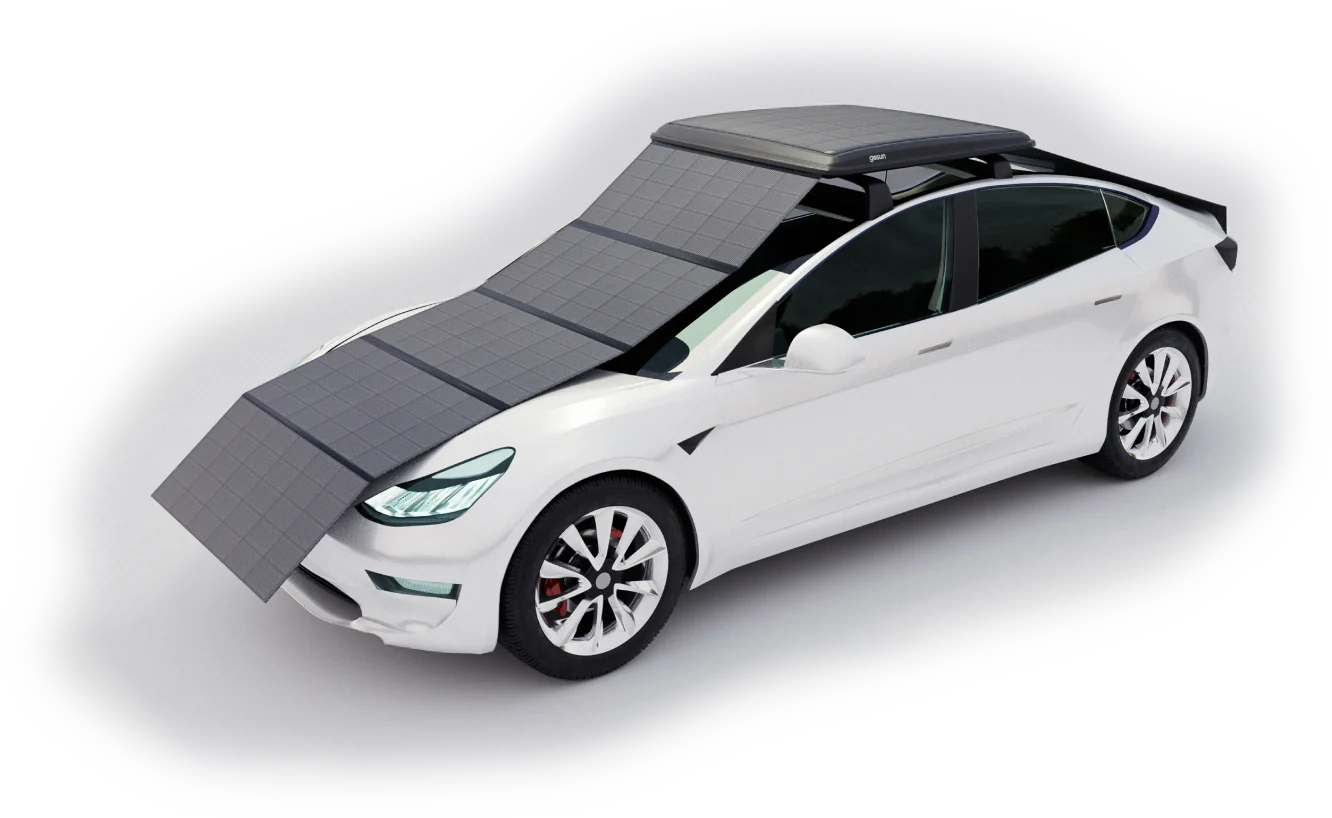As EV technology gains significant popularity worldwide, the limited availability of charging stations tends to be the major reason why people refrain from buying it. Studies revealed up to 44% of EV users face range anxiety; 75% complained of arriving at stations and finding them occupied; and up to 16% completely ran out of juice at least once.

But now there’s no need to wander in search of your nearest charging station. US-based company GoSun has introduced a pioneering EV charging technology that converts sunlight directly into electricity, providing a cleaner, greener, and more reliable alternative for charging.

Innovative solar-powered product-making company GoSun has come up with an EV solar charger this time. Introducing the GoSun EV Solar Charger, a lightweight, mobile, and highly efficient charging system. Its 4×4-foot-wide solar panel setup attaches to the crossbar, converting sunlight into electrical backup. Allowing you to recharge easily and freely, regardless of the location. Just open the lid, unfold the panels, and attach the EV charging cord while your vehicle rests and recharges.
Similar Posts
Made from flexible monocrystalline solar panels that generate 1200 watts of solar energy when fully extended (8 feet in the front and back) and up to 200 watts when closed. According to the company, that’s enough to supply 30 miles of daily commute, with an average of 10 to 20 miles. It also works on AC, DC, and USB outputs to charge your devices when you run out of charge with no station around.

According to GoSun CEO Patrick Sherwin, “There’s 200 watts on the top that’s constantly charging the small buffer battery that comes with the system, so even when you’re driving, you’re still charging.” He also mentioned, “Our EV Solar Charger is another example of GoSun’s dedication to developing breakthrough solar solutions and pushing for a brighter future. It is empowering to make your own fuel every day simply by capturing the sunshine that falls on your vehicle’s footprint.”

The GoSun EV charger is suitable for every electronic vehicle. Weighing around 70 pounds (32 kg), this charging system barely takes 20 minutes for installation, requiring only two people. The lithium-ion phosphate battery perfectly deals with sunlight fluctuations on less sunny days. Made from ABS plastic, ETFE-coated monocrystalline solar PV, aluminium, and stainless steel, it is not only durable to withstand all weather conditions but also detachable on the days you’re not using it. Most importantly, this entire system is designed using anti-theft technology that keeps it secure.

Harnessing solar energy GoSun not only reduces the burden of electricity but also the carbon footprint, becoming an eco-friendly alternative. According to a Trendforce report, EV charging stations worldwide might triple from 2023 to 2026, reaching a peak of 16 million. Lately, several other countries from all over the world, like the Netherlands, Macau, and Romania, are opting for solar energy to charge their EVs, as per MDPI reports. Where EVs are already contributing towards sustainability, it looks like solar charging technology is also coming out as the most promising and green alternative.

EV chargers have come a long way since their introduction back in 1830 with Robert Anderson’s motorised carriage. These initial batteries were made from galvanic cells and were non-rechargeable. Today, we have stepped into an era where sustainable charging is increasingly becoming essential while we phase out fossil fuels.


















